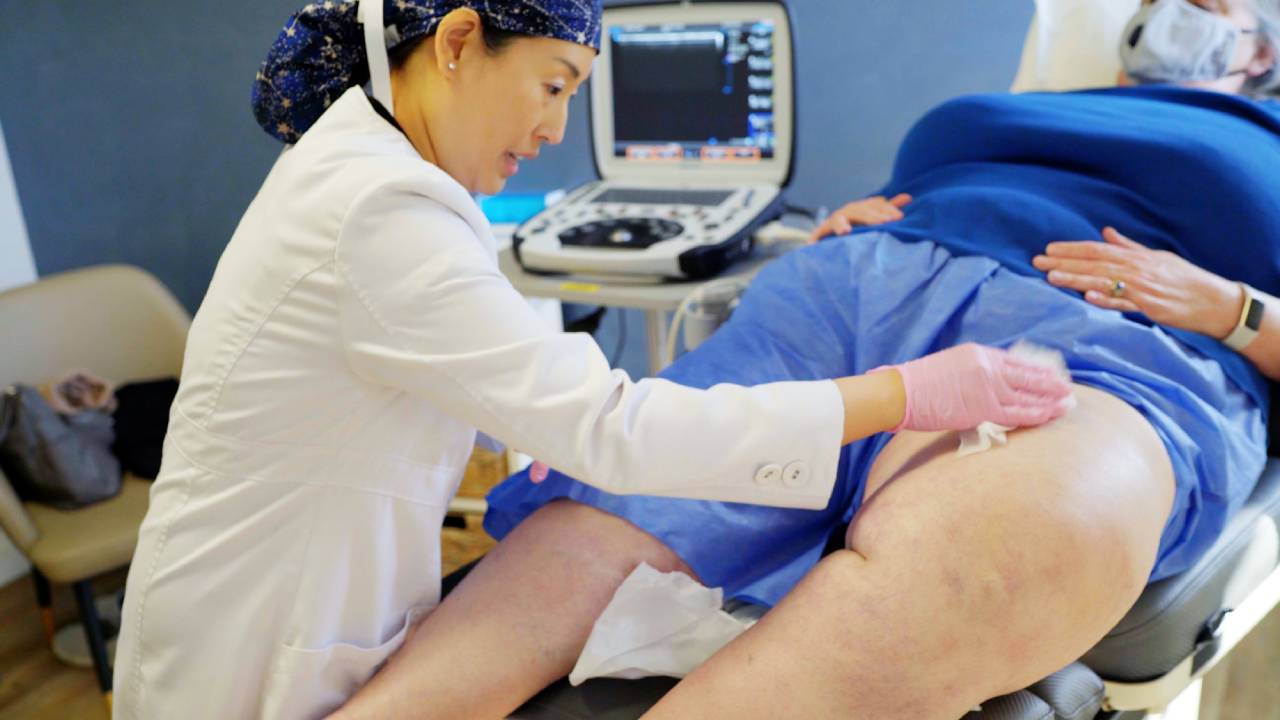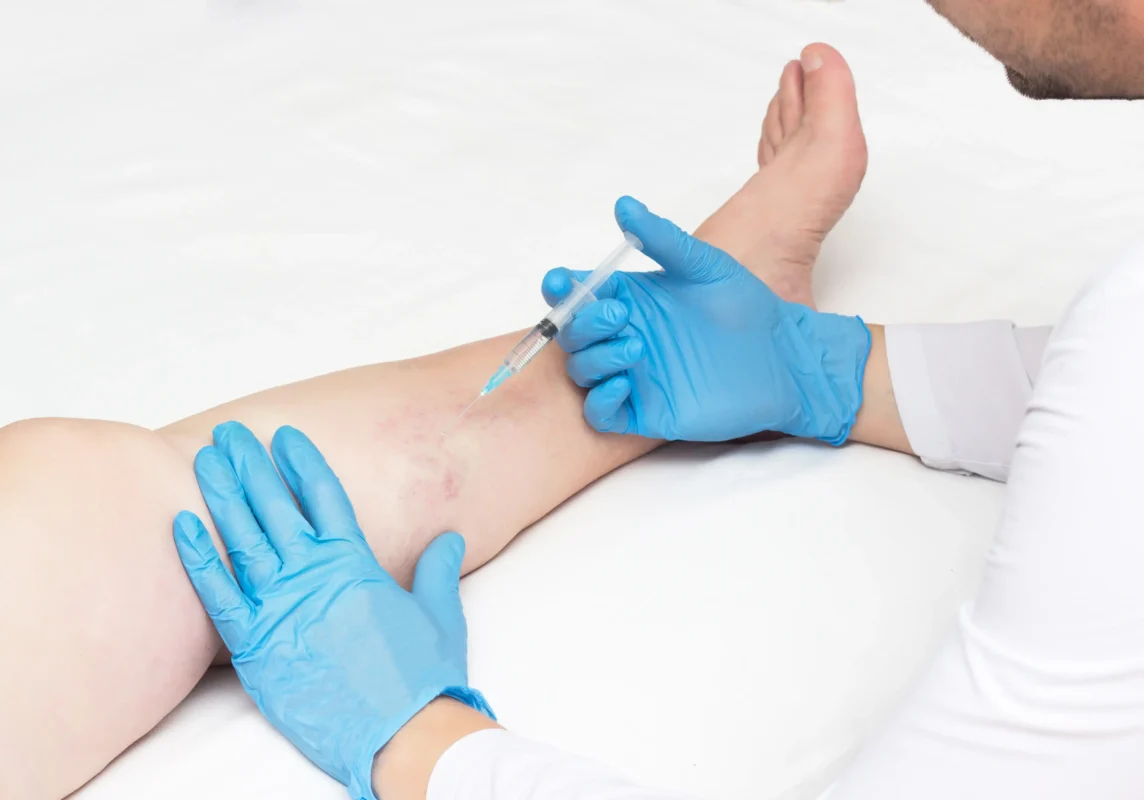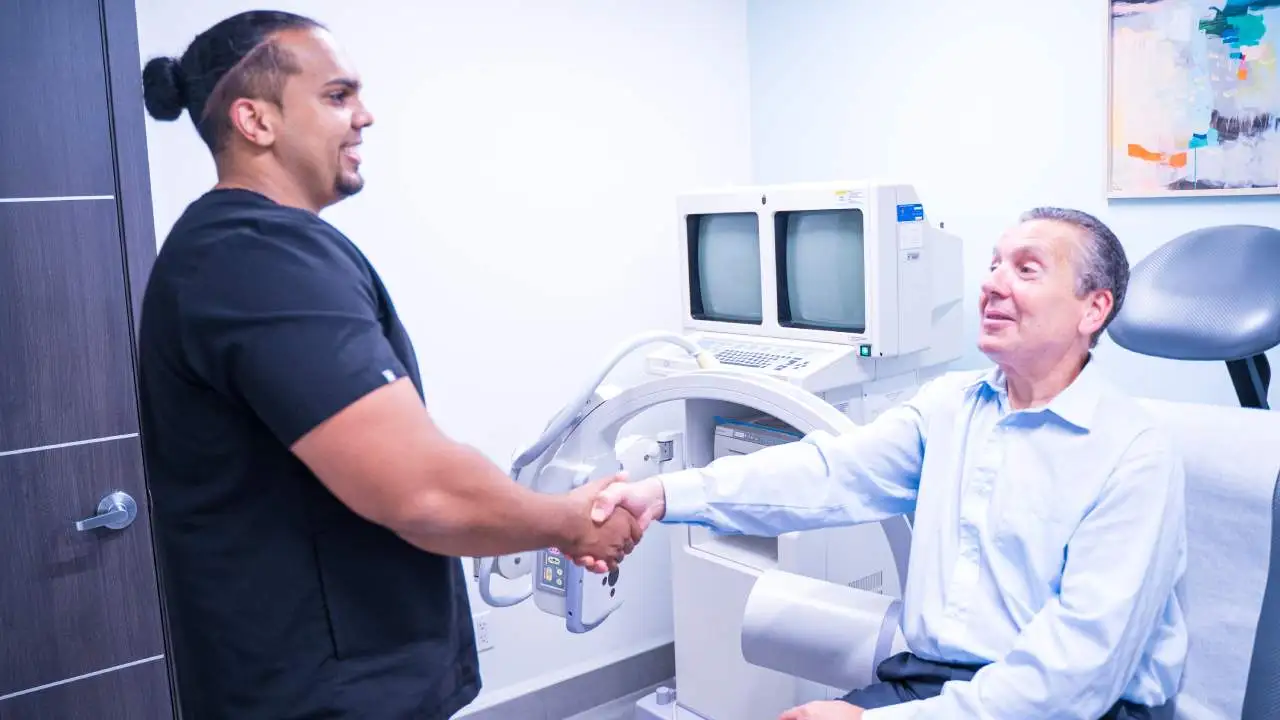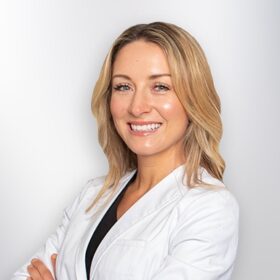You wake up each day and notice fine, web-like veins spreading across your legs, causing discomfort, aching, and even itching. While spider veins are often confused with varicose veins, they are smaller and closer to the surface of the skin. Unlike varicose veins, which are often bulging and ropey, spider veins are thin, red, blue, or purple lines that spread out like a spider’s web. However, just because they’re smaller doesn’t mean they should be ignored.
There’s a common misconception that spider veins are purely cosmetic and don’t require treatment. However, the truth is that spider veins can be indicative of underlying venous insufficiency—a condition where your veins aren’t effectively circulating blood back to your heart. At Vein Treatment Clinic, we offer the latest minimally invasive vein treatments to address the root cause of your vein problems and improve the aesthetic appearance of your legs. In this article, we’ll explore the top five spider vein treatments that could change your life.
#1 Sclerotherapy
Sclerotherapy is widely regarded as the gold standard for spider vein treatment. This minimally invasive process involves injecting a sclerosing agent directly into the affected veins. The solution causes the vein walls to collapse and stick together, eventually turning into scar tissue that fades away. One of the benefits of sclerotherapy is that it requires no anesthesia and can be done in a short office visit. Over the course of several weeks, the treated veins fade, leaving your skin clearer and your legs feeling lighter.
#2 Radiofrequency Ablation
Radiofrequency ablation (RFA) uses radiofrequency energy to heat and close off the veins. Unlike sclerotherapy, which is ideal for spider veins, RFA is typically used for larger saphenous veins that contribute to the formation of spider veins. A small catheter is inserted into the vein under ultrasound guidance during the process. The radiofrequency energy is then delivered through the catheter, causing the vein to collapse and seal shut. Over time, the body naturally absorbs the treated vein, rerouting blood to healthier veins.
#3 VenaSeal
VenaSeal is a cutting-edge vein treatment that offers a non-thermal, non-tumescent alternative to traditional methods like vein ablation. This treatment involves using a specially formulated medical adhesive to close off the problematic veins responsible for the formation of spider veins. Unlike other treatments that use heat or chemical agents, VenaSeal seals the vein using a small amount of glue, which is delivered through a catheter. This treatment is particularly beneficial for those who prefer a less invasive approach with minimal recovery time.
#4 Clarivein
Clarivein is another innovative vein treatment that combines mechanical and chemical methods to eliminate problematic veins. This technique involves using a rotating catheter that delivers a sclerosant solution directly into the vein. The rotation of the catheter helps to disperse the solution evenly, ensuring that the vein is thoroughly treated. Clarivein is a quick process, usually taking less than an hour, and requires no anesthesia or downtime. Clarivein treats both spider veins and their underlying causes, such as venous insufficiency.
#5 Ambulatory Phlebectomy
Ambulatory phlebectomy is a highly effective process for removing varicose veins that are too twisted for other treatments. This minimally invasive technique involves making tiny punctures in the skin through which the vein is carefully removed. The incisions are so small that they don’t require stitches and leave minimal scarring. Ambulatory phlebectomy is ideal for treating veins that are visible on the surface of the skin and cause discomfort or pain.
Signs and Symptoms Indicating You May Need Vein Treatment:
- Aching or cramping in the legs, especially after standing for long periods
- Swelling in the ankles or legs
- Itching or burning sensation around the affected veins
- Visible, web-like veins on the surface of the skin
- Discoloration or darkening of the skin around the affected area
- Heaviness or fatigue in the legs
- Bleeding from the affected veins
- Development of ulcers or sores near the affected veins
Tips to Prevent or Mitigate the Risk of Spider Veins:
- Maintain a healthy weight: Carrying extra weight can put pressure on your veins, leading to venous insufficiency and spider veins. By maintaining a healthy weight through a balanced diet and regular exercise, you can reduce the strain on your veins and lower your risk.
- Exercise regularly: Physical activity promotes healthy blood circulation, which is crucial for preventing the development of spider veins. Aim for at least 30 minutes of exercise most days of the week. Activities like walking, swimming, and cycling are particularly beneficial.
- Elevate your legs: Elevating your legs above heart level for 15-20 minutes several times a day can help reduce swelling and improve blood flow. This simple habit can be especially helpful if you spend long periods sitting or standing.
- Avoid prolonged sitting or standing: Staying in one position for too long can cause blood to pool in your legs, increasing the risk of spider veins. If your job requires long periods of sitting or standing, try to take breaks to move around or shift your weight periodically.
- Wear compression stockings: Compression stockings apply gentle pressure to your legs, helping to improve circulation and reduce the likelihood of spider veins. They are especially useful for people who are prone to venous issues or who have a family history of spider veins.
- Stay hydrated and avoid excessive heat: Dehydration can cause your blood to thicken, making it harder for your veins to pump blood efficiently. Drinking plenty of water and avoiding excessive heat, such as hot baths or sunbathing, can help keep your veins healthy.
At Vein Treatment Clinic, we understand that dealing with spider veins can be both a physical and emotional burden. That’s why we offer a range of treatments tailored to your needs, all performed by our board-certified vein doctors. Most of our minimally invasive vein treatments are covered by medical insurance, especially if they’re deemed medically necessary. Learn about our vein clinics in New York, Long Island, California, Maryland, and New Jersey to start your journey towards healthier legs.









